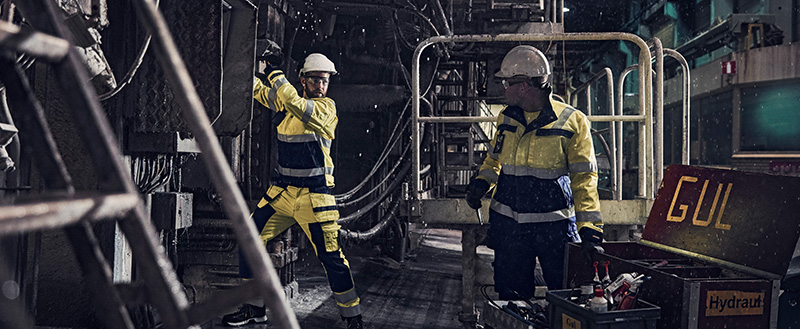Risk area electrical arcs
What are electrical arcs?
Electrical arcs are one of the most serious and least known risks when working with electricity. An electrical arc is a luminous current path that passes between two current-carrying metal or carbon electrodes in the air. This creates very strong ultraviolet light and intense heat. An arc can occur when there is electrical equipment and during maintenance/repair, an arc may occur if the equipment cannot be turned off for some reason. Arcs can be caused by technical faults in electrical equipment, such as improper installation, dust, corrosion, dirty surfaces, and sometimes even wear and tear. However, in most cases, short circuits are due to the human factor, such as a worker touching the wrong surface with a probe.
Who is at risk of being exposed to electrical arcs?
- The workers who are at risk of being exposed to electrical arcs are:
- Electricians
- Industrial electricians
- Personnel at electric vehicle workshops
- Server technicians
- Electrical engineers
- Personnel working near high voltage
What dangers arise from arcs?
Depending on the arc's strength, duration, and distance, the following dangers can arise:
- Intense heat up to 20,000 ° C, which causes burns on the worker's skin and body.
- Fire that can damage the worker and the environment in the workplace.
- An arc blast with explosive force up to 1000 kg/m2 that sprays molten metal particles and broken parts from damaged equipment at high speeds, potentially injuring the worker.
- Sound blast (up to 140 dB - as loud as a gunshot) - which can damage the worker's hearing.
- Ultraviolet light from the explosion that can damage the worker's vision.
p>

How do you protect yourself from arcs?
In Sweden, employers and facility owners must follow laws and regulations on safety when working and operating electrical installations. NOTE! All clothing must be certified according to the flame-retardant standard, including your underwear.
Important things to note before working on electrical installations:
- Workers should be trained for the work to be performed.
- Employers and managers should conduct a risk analysis of the work to be performed and assess the arc hazard.
- Facility owners must know the energy level that can be released during an arc fault (the incident energy) and who can be exposed to the danger. This incident energy is again crucial for the type of personal protective equipment that must be used for safety reasons during operation. If the incident energy at the operating distance from the power source is lower than 1.2 cal/cm², this is a level that does not require arc-resistant clothing. If the energy is calculated at higher levels than 40 cal/cm², this is an extremely dangerous level that normally requires work to be carried out only after the power supply has been disconnected with remote control.
- Personal protective equipment should be used.






